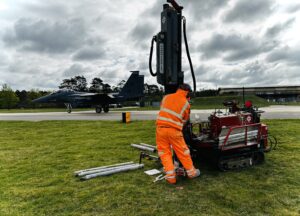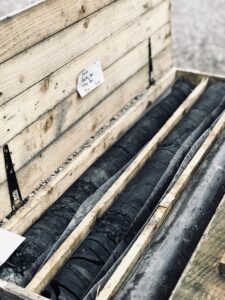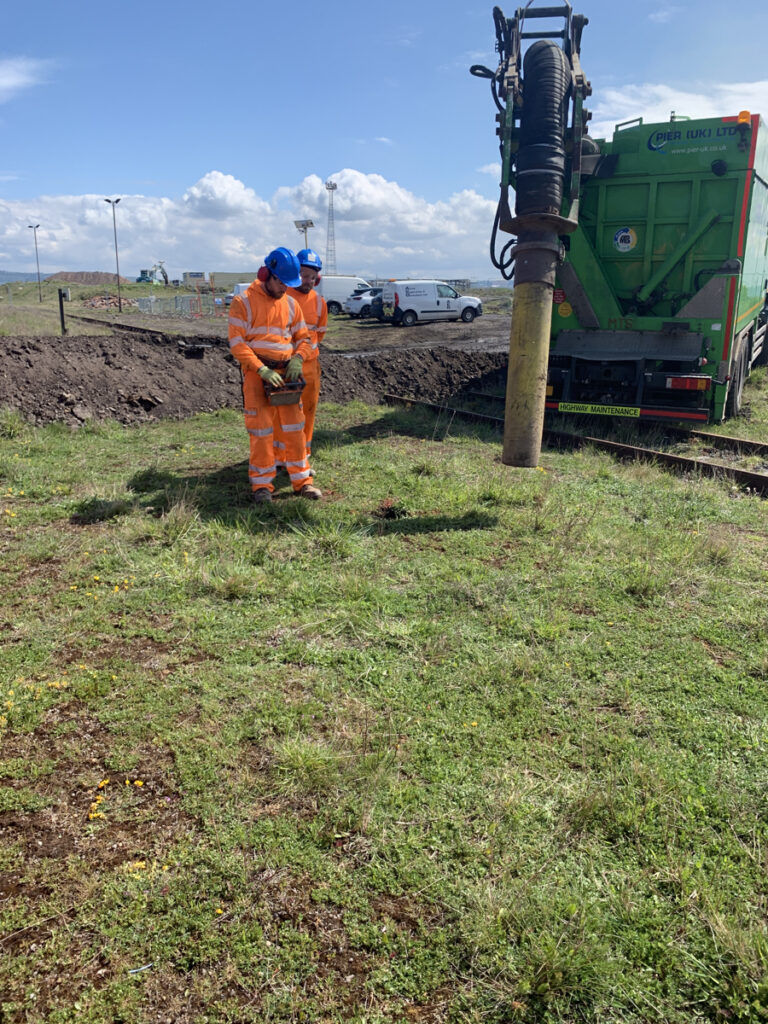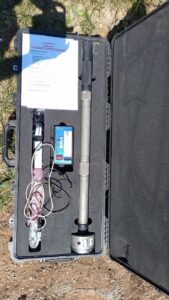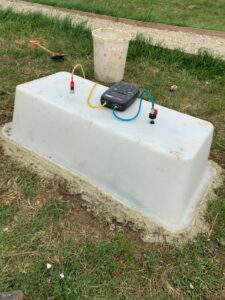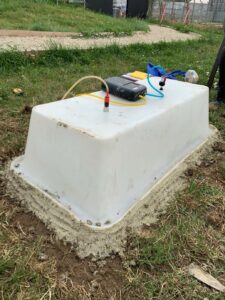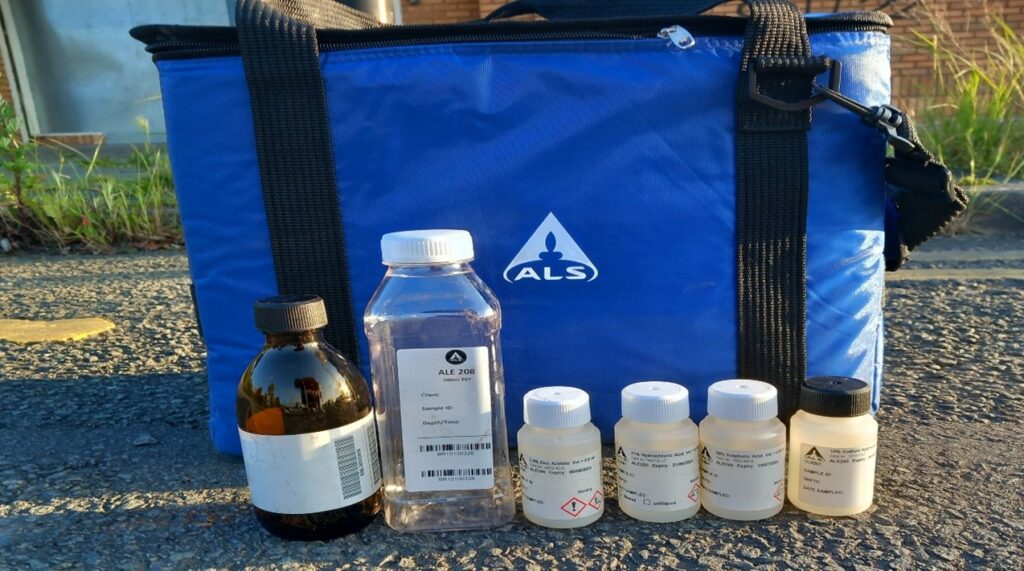Name: Tim Clegg
Job title: Managing Director
Company name: Geosense Ltd
What does the company do and what areas does it specialise in?
Geosense is a leading UK manufacturer and global supplier of Geotechnical Instruments and data acquisition systems. We specialise in the design and manufacture of MEMS and Vibrating Wire monitoring sensors which are used in many sectors including site investigation, dams, bridge, deep excavations, infrastructure, mining and more.
Where is Geosense located?
We have a purpose-built manufacturing facility in Suffolk.
How many people does the company employ?
Currently 59. Interestingly, three years ago it was around half that, but we have needed to grow to meet the rising demand for our products. We recruit mainly from the local area, with many of our staff joining us as school levers and working their way through the business to hold managerial roles. Since Covid, we have also been able to expand some roles to fully remote working with two members of the sales team based in Manchester and a member of technical support near Oxford. We have also recently employed our first overseas employee in the US.
How long have you worked at Geosense?
I worked part time during school holidays from the age of 16. My full-time role at Geosense started in 2013 so I would say I have been at Geosense 10 years. Time does fly!
What is your career background, and what enticed you to work for Geosense?
My career background is short! I started as a pot washer at a local pub and worked at a local supermarket before heading off to the University of East Anglia in Norwich. I studied Economics for 3 years before joining Geosense assisting in the production department.
Geosense is a family business but working at Geosense was not always a route I wanted to go down, nor one which was expected. However, I can say I love my job and consider myself lucky to have the opportunity to work in this industry.
Knowing what I know now, the best part of working at Geosense is the exciting projects we work on, and the people we work with. This industry is full of passionate people who genuinely care about the work we do and the value we provide on every project.
What is your current role within Geosense and what does a typical day entail?
I am currently Managing Director. A typical day? I am incredibly lucky that I get to work across multiple departments all performing important functions in the business. Officially my role is to ensure everyone is happy and to make decisions on current and future strategy. Unofficially I do anything that is required on any given day. In short, I get to work with a great team to make some very exciting stuff happen.
This week I have been working with our software developer on an exciting new development digitising our calibration data. I was also looking at new types of sustainable packaging and had a 6am call with Singapore and a trip to the Houses of Parliament. As I said, quite varied!
Having been Commercial Manager, Sales and Customer relationships is what I know and I help a great team who look after our customers across the globe. Customer care and support is key to every member of the Geosense team.
What are the company’s core values?
We recently did a workshop with the whole company to put forward and agree on our companies values as we enter into an exciting period of growth in the company. The company has grown significantly, and we wanted to develop new values that could help us navigate the future whilst recognising what made us successful. We chose the following:
Open & Honest Communication
Care & Respect
Collective Responsibility
Client Focused
Agile
These values embody what Geosense is and how we want to work, they were decided and agreed by every single member of staff.
Are there any projects or achievements which Geosense are particularly proud to have been a part of?
In 2022 Geosense was one of 141 companies in the UK to win a Queens Award for Enterprise for International Trade. Seen as the most prestigious award a UK company can receive, we are particularly proud that the certificate was one of the last to be signed by the late Queen Elizabeth II. The main thing is that it recognised the hard work and skill of every single member of the company, past and present, during the last three years.
As for projects, we are proud to have been involved in many well-known UK projects such as Tower Bridge, Tideway, HS2, Battersea Power Station, HARP and Woodsmith Mine, to name but a few.
I am hugely proud when I walk around London and know that our sensors have helped monitor some of the capital’s most iconic structure. Often very frustrating for friends and family who join me scouring buildings for the total station or dataloggers!
How important is sustainability within the company?
As a responsible modern business, we have sustainability in mind on what we do right now and our plans moving forward. Our production facility is heated/cooled using ground source geothermal and our roof is full of solar panels.
We have an internal environmental committee, with members from all areas of the business discussing and creating our vision to have as small as possible negative impact on the planet. We are also currently implementing a roadmap to zero plastic packaging for all products.
Recently we digitised all our calibration data which means that we will be phasing out paper calibration records in favour of QR code-driven digital records. If clients do want paper copies, we will be donating £1 for every paper copy to Forestry England.
We are a proud UK manufacturer and, where possible, keep the majority of our supply chain within the local area and the UK. We firmly believe in managing a sustainable supply chain.
How does Geosense support graduates and early career professionals who are entering the industry?
We are big advocates of training and personal development for our staff. A number of the team are completing formal qualifications as part of their roles at Geosense.
Geosense has always been proactive in providing training and support for engineers. Recently we launched our Geosense Academy which provides tailored training on our products/applications to a wide range of professionals, including graduates and early career professionals. To date over 80 engineers have been through the academy.
We are always open to summer placements for graduates if they want to learn more about the industry or manufacturing.
How has COVID-19 impacted Geosense today? Are there any policies which were made during the pandemic that have been kept to improve employee wellbeing and productivity?
I think the main impact that should be addressed is the affect that COVID had on everyone’s wellbeing. I am very glad that this is now something that is being discussed more and businesses are taking a more active role in managing wellbeing. At Geosense, we have increased the number of mental health first aiders to 5, and also offer an EAP system to offer support to staff. We are also providing food in the canteen to help ease some of the burden of the cost of living for our staff.
Flexible working was already being implemented but COVID certainly sped things up for us! Since COVID we have continued with flexible working and have also introduced flexible working patterns for production which has been really well received.
One small thing we introduced in the sales team was a Monday morning meeting where the first section of the meeting was to go through what everyone did at the weekend, with a Friday meeting to share what the plans were for the weekend. This made the meetings not just about business and made a huge difference during COVID. At least the things we do at the weekend now are a lot more exciting than they were during COVID!!
Why do you feel the AGS is important to the industry?
I must admit I used to think the AGS was mainly centred around data format.
However, having attended many conferences and being involved in the AGS I&M working group, I have seen a large group of passionate professionals who want to help standardise the industry and make the use of Geotechnical methods as easy and useful as possible. Also, while a lot of our work is construction aligned, we often get ‘lost’ within the construction industry bodies. The AGS fulfils an important role for the sharing of ideas and discussing how best to pass this information to different parts of the wider industry,
I now see the AGS as a group who want things done properly in our industry!
What are Geosense’s future ambitions?
To grow while still enjoying the journey!
Our industry is experiencing an exciting period with great innovation and increased adoption. We are at a point we can shape and point the industry in a good direction.
With greater connectivity options, digital innovations, and the ability to do more with data the future is very bright indeed.




